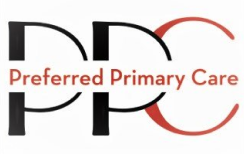The Journey of a Potential Nursing Diagnosis: A Step-by-Step Guide
Every nurse knows that care isn’t just about treating what’s visible—it’s about understanding the whole person and predicting potential problems before they become critical. This is where the concept of a potential nursing diagnosis comes into play.
A proactive nursing assessment focuses on identifying and addressing health risks before they escalate into serious complications. Let’s explore how this diagnostic process unfolds and why it plays a crucial role in patient care.
What Is a Potential Nursing Diagnosis?
Imagine a nurse walking into a patient’s room, armed with their stethoscope, clipboard, and years of experience. They’re not just looking at the patient’s current condition, but also scanning for things that could go wrong. Maybe the patient is recovering from surgery, or perhaps they have a chronic condition that needs monitoring.The nurse’s job is to spot any potential risks that could arise down the line, that includes
- Risk of infection – particularly for post-surgical patients, which can be prevented through proper wound care and skilled nursing interventions.
- Developing a blood clot – often seen in immobile patients, where inpatient rehabilitation can play a role in prevention.
- Falling out of bed – a significant risk for elderly or post-surgical patients, which can be managed through fall-prevention protocols in assisted living care.
It’s important to note that these aren’t just guesses. They’re based on a solid foundation of patient history, observations, and professional judgment. The nurse isn’t waiting for something to go wrong—they’re trying to prevent it from happening in the first place.
How Early Does This Diagnosis Happen?
A potential nursing diagnosis doesn’t wait for the problem to appear. In fact, it often happens early—right at the beginning of a patient’s care journey. It’s part of that initial assessment when a nurse first meets the patient, or even during ongoing assessments.Identifying risks early is a critical component of outpatient healthcare consultation, where patients receive preventive care recommendations.
The Assessment Process: Getting to the Heart of the Matter
Making a potential nursing diagnosis involves a thorough and systematic approach:
- Physical Assessment: Checking vitals and looking for signs of distress, especially in post-acute care patients.
- Medical History Review: Considering past conditions and family history for any red flags that may require home healthcare visits.
- Lab Tests: Identifying any hidden issues that may not be immediately visible, ensuring timely interventions in skilled nursing care.
- Patient Interviews: Asking patients about symptoms, like feeling light-headed, to spot potential risks, which is particularly important in long-term care patients.
- Consider External Factors: Evaluating the patient’s age, environment, and mental health, especially for elderly patients, as these can influence their risk factors and overall care needs in assisted living facilities.
Tools of the Trade: How Nurses Gather Information
To make this diagnosis, nurses don’t just rely on their gut feelings—they use tools that help them get a clearer picture.they use various tools to gather information and get a clearer picture of the patient’s condition:
- Fall Risk Scales: Help assess the likelihood of a patient falling, especially in elderly or post-surgical patients.
- Pain Assessments: Aid in understanding the level of discomfort a patient is experiencing, which can indicate potential complications.
- Electronic Health Records (EHR): Provide a comprehensive view of a patient’s medical history, lab results, and ongoing assessments, allowing nurses to track progress.
- Vital Sign Monitoring Tools: Devices like blood pressure cuffs and thermometers help identify sudden changes, such as a potential drop in blood pressure after surgery, enabling early interventions.

How Do Nurses Prepare This Diagnosis?
Making a potential nursing diagnosis isn’t like writing down random notes in a chart. There’s a process involved. Nurses don’t just make guesses—they collect data from various sources, analyze it, and come up with a well-rounded picture of the patient’s health. They think critically, applying their clinical knowledge to make sense of all the information. And then, they document their findings clearly, so everyone else involved in the patient’s care can understand the reasoning behind it.
How Do Nurses Communicate This Diagnosis to Doctors?
One of the most important parts of a nursing diagnosis is communication. Nurses aren’t working in isolation—they’re part of a larger healthcare team. So, once a potential nursing diagnosis has been made, the nurse must ensure the physician is aware of it. This is typically done in two ways: verbally and in writing.
During rounds or team meetings, nurses will communicate their findings to the doctor, discussing the potential risks they’ve identified and what actions they’ve taken to prevent complications. Written documentation is also key. The nurse will make sure to include their diagnosis in the patient’s chart or electronic health record, ensuring everyone is on the same page when it comes to the patient’s care plan.


